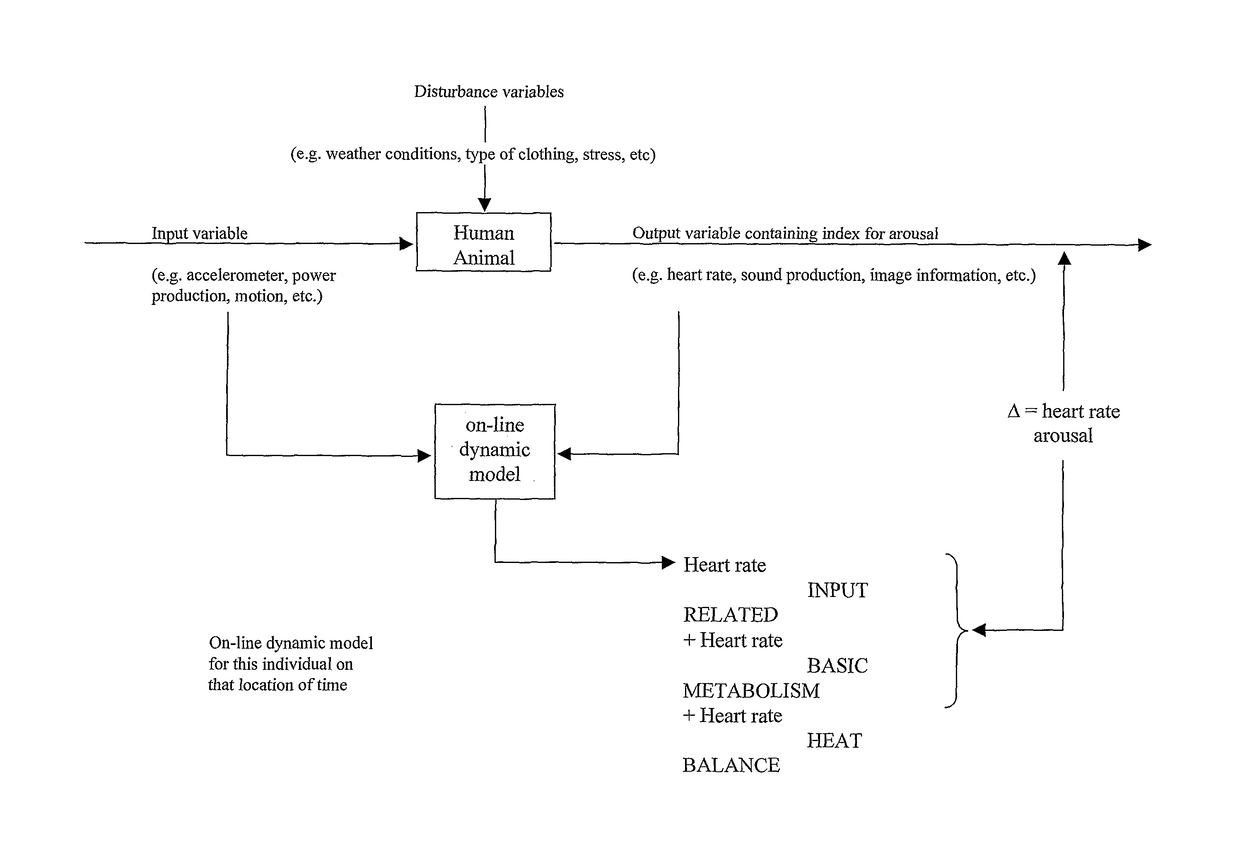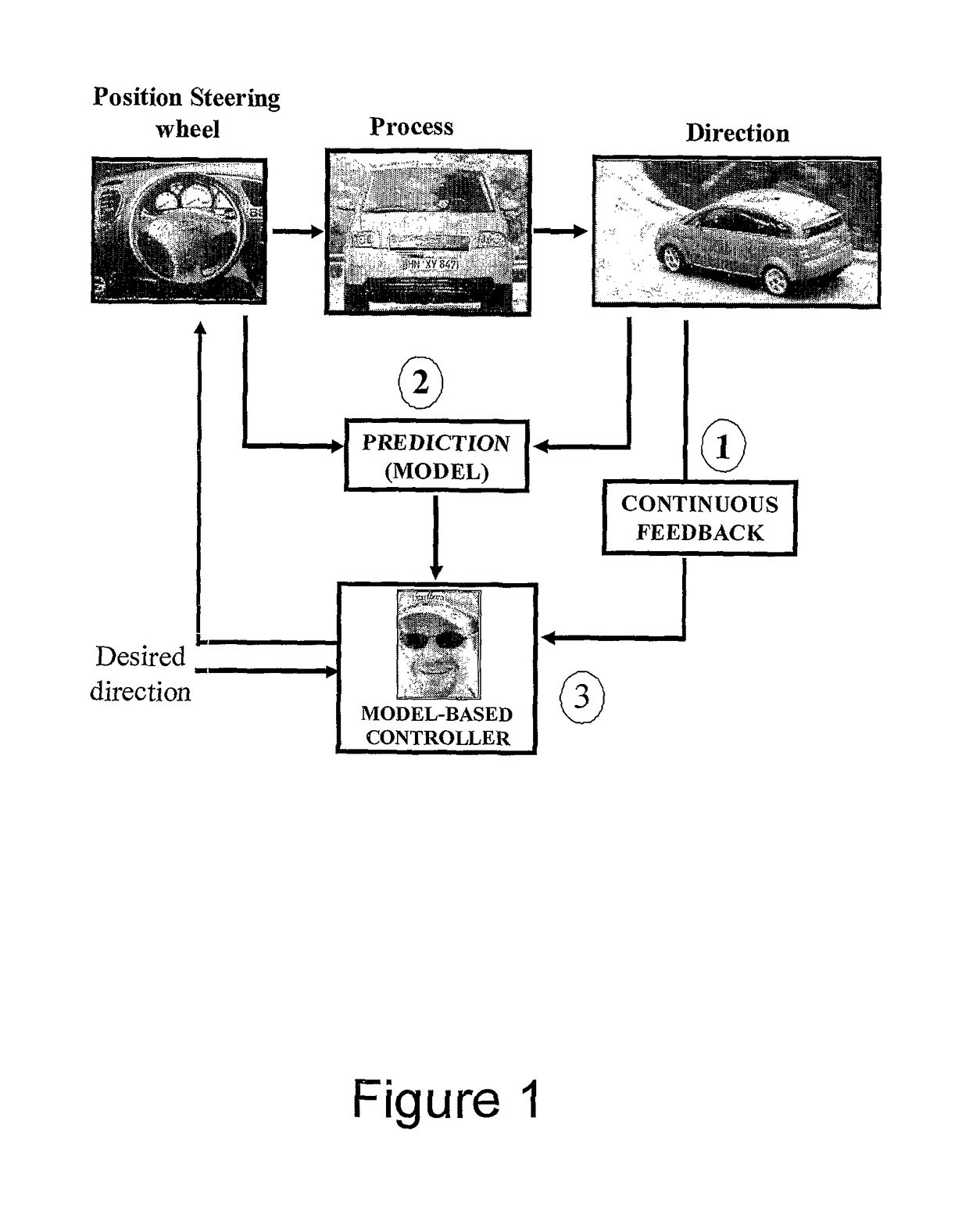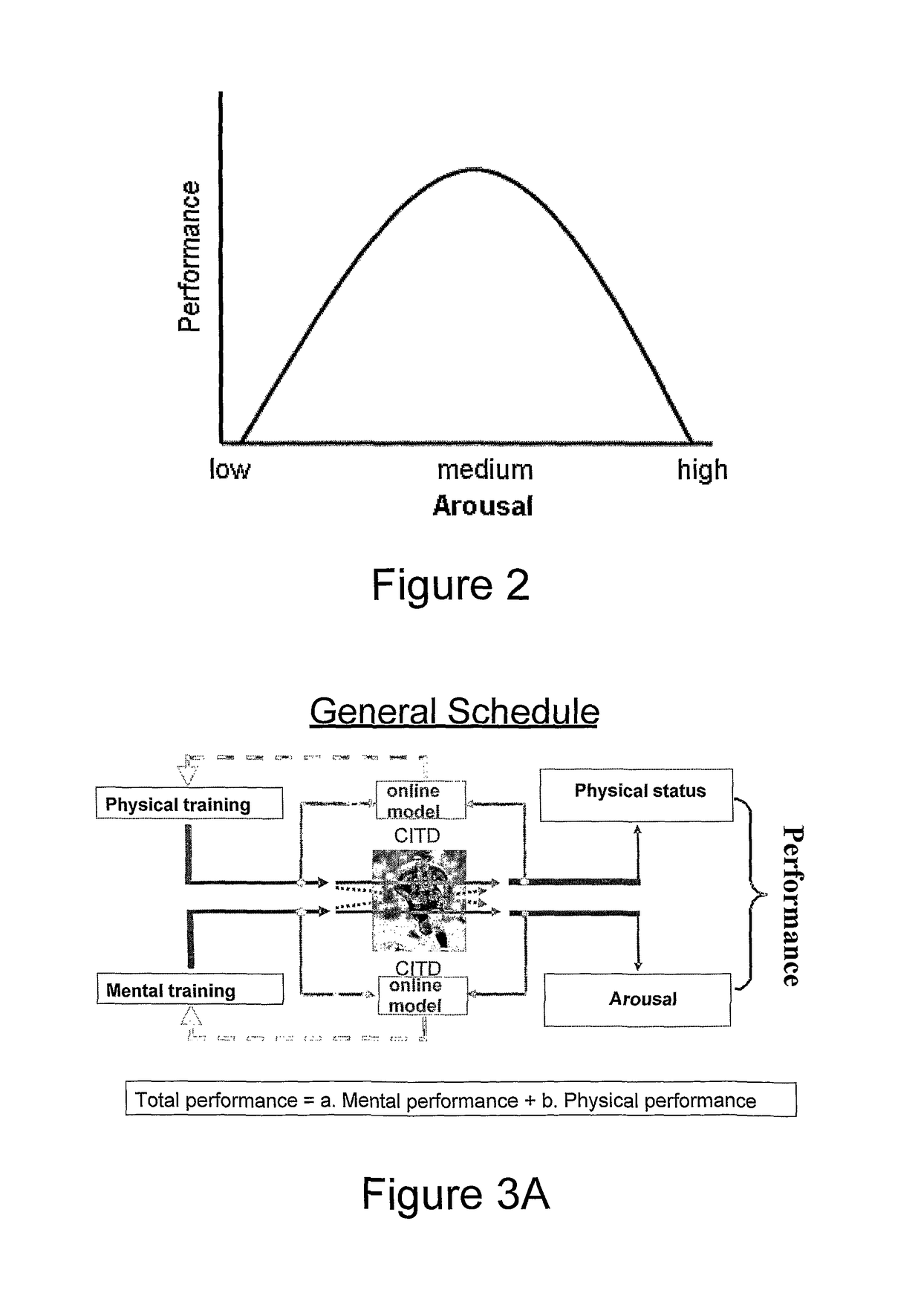Real-time monitoring and control of physical and arousal status of individual organisms
a real-time monitoring and control technology, applied in the field of real-time monitoring and control of physical and arousal status of individual organisms, can solve the problems of insufficient feedback condition, complex model, complex and inaccurate control purposes in practice, etc., and achieve the effect of simple structure, accurate prediction of the dynamic citd behaviour of complex bioprocesses, and simple structur
- Summary
- Abstract
- Description
- Claims
- Application Information
AI Technical Summary
Benefits of technology
Problems solved by technology
Method used
Image
Examples
example 1
tion of Heart Rate
[0250]The total performance of a sports athlete will always be function of both his physical and mental status, and moreover, his physical performance is influenced by his mental status and vice versa (FIG. 3A).
[0251]In order to monitor and manage both the physical and mental performance (FIG. 3B) both the training effort (input signal) and resulting training effect on the body (output signal) are measured in real-time. In this way the Complex, Individual, Time-variant and Dynamic behaviour (CITD) of the individual can be handled. In the case of a sports athlete, this means that the individual athlete will be equipped with the necessary sensor technology to measure in real-time and telemetric the input and output signals to a data acquisition unit (FIG. 7A).
[0252]As output signal, the total heart rate is used. Total heart rate, because the heart rate signal measured by any means (from a simple heart rate monitor to a high technologic ECG measurement) always is and ...
example 2
l and Real-Time Monitoring of Arousal of Athletes
[0288]2.1 Setup of the Experiment
[0289]This example describes a methodology that was developed for monitoring and control of arousal of individuals. First of all, the mental or arousal component of heart rate is singled out based on the on-line and continuous measurement of training activity and total heart rate (see example 1).
[0290]Secondly, so-called ‘emotional events’ or ‘arousal events’ are calculated from the (physiological) arousal heart rate component.
[0291]The detection of emotional events starts from the calculated physical component of heart rate from on-line measured physical activity and on-line measured total heart rate. Based on this physical component of heart rate and the total heart rate, the arousal component of heart rate is calculated on-line by a real-time subtraction of the physical heart rate component from total heart rate. The occurrence of clear emotional events in the arousal component of heart rate is perf...
example 3
g and Management of Physical Performance of Sport Athletes
[0311]FIG. 14A shows a general representation of how bioprocess control can be achieved for the example of a cyclist.
[0312]3.1 Materials and Methods
[0313]Test Installation
[0314]The experiments were performed on an ergometer (Tunturi T8). The ergometer was placed in a wind tunnel with dimensions of 2.3 m×1.5 m×2.1 m. The back wall of the wind tunnel consisted of 12 ventilators (fancom type 1435). A schematic overview is shown in FIG. 14B. The ergometer was connected to a computer via a LAN link and the time course of the effort level could be programmed (T-ware software). Every 5 seconds the following variables were logged: heart rate (bpm), cadence (1 / minute) and effort level (W). For the heart rate measurement the cyclist had to wear a Polar T31 transmitter.
[0315]Experiments
[0316]First of all, for all experiments the physical component of heart rate was singled out and used for further analyses (see Example 1).
[0317]Two type...
PUM
 Login to View More
Login to View More Abstract
Description
Claims
Application Information
 Login to View More
Login to View More - R&D
- Intellectual Property
- Life Sciences
- Materials
- Tech Scout
- Unparalleled Data Quality
- Higher Quality Content
- 60% Fewer Hallucinations
Browse by: Latest US Patents, China's latest patents, Technical Efficacy Thesaurus, Application Domain, Technology Topic, Popular Technical Reports.
© 2025 PatSnap. All rights reserved.Legal|Privacy policy|Modern Slavery Act Transparency Statement|Sitemap|About US| Contact US: help@patsnap.com



